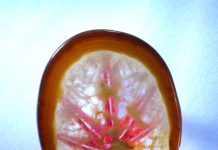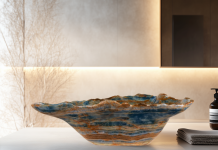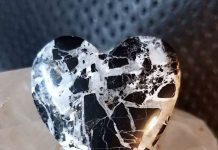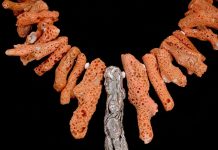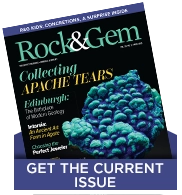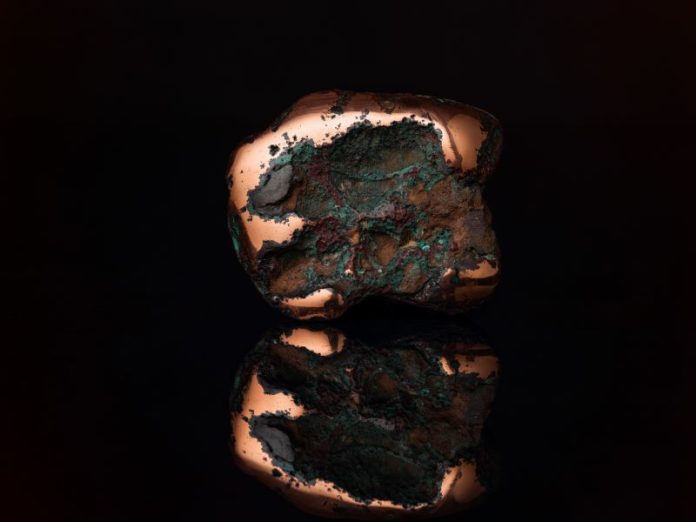
Michigan minerals, mines and museums in the (UP) Upper Peninsula have a long history. In the mid-1800s, the discovery of large deposits of copper and iron attracted thousands of miners to settle in the UP. These same mineral deposits had previously been discovered by Native Americans thousands of years before and used to make tools, jewelry and ceremonial artifacts.
Today, rockhounds visit this area, not only to collect Michigan minerals like Lake Superior agates and fluorescent sodalites, but many are drawn to immerse themselves in the history and culture of the copper and iron industries that built this part of Michigan.
Let’s take a look at a few of Michigan’s minerals, mines and museums in the UP that are often found in association with these native copper and iron deposits. A visit during Keweenaw Week in August may even provide an opportunity to collect samples from mines not usually open to the public, visit a local club’s rock and mineral show or attend a special event at a world-class museum.
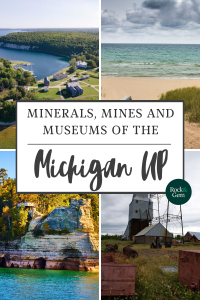
Glacial Deposits
The metamorphic and igneous rocks of the UP are some of the oldest on earth. Ancient, iron-rich sea beds and Midcontinent Rift volcanism before the Ice Age, contributed to the presence of both ferrous minerals (iron ore) and non-ferrous, metallic minerals (copper, nickel, silver and gold) in this part of Michigan.
During the Ice Age, thick layers of ice advanced and retreated multiple times over the entire Great Lakes area, scraping, scouring, depositing and moving native copper, silver, iron and a host of other minerals, leaving deep depressions that filled with glacial melt-water, creating the Great Lakes and a rockhounding paradise concentrated in the UP of Michigan.
The main copper deposits were found in the Keweenaw Peninsula, as well as Isle Royale. Two major iron deposits were located to the south, in the Marquette and
Menomonee Ranges. Mining these deposits comprised the UP’s main industry from the mid-1800s to mid-1900s until the price of the minerals declined, supplying 80% to 90% of all U.S. copper and iron.
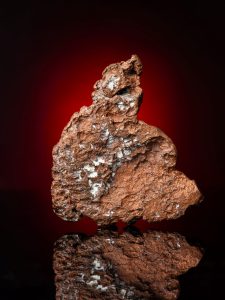
Photo courtesy Darin Dubinsky
Michigan Minerals: Native Copper
Native copper (Cu), is solid, metallic copper that is about 90% pure. Michigan’s UP holds the record for the largest deposits in the world as well as the source of some of the largest pieces ever found. Sometimes, it is found as float copper—pieces of copper freed from its matrix by natural weathering or glacial action.
The ‘Ontonagon Boulder,’ a float copper, discovered and used in ceremonies by early Native Americans, was found along the west fork of the Ontonagon River, just south of the town of Ontonagon. It weighs almost two tons and has been on display at the Smithsonian in Washington, D.C. since 1860. A replica can be found in the Ontonagon Historical Society Museum.
The world’s largest known existing float copper, found in 1997 on private land near the Quincy Mine claims, once resided in Presque Isle Park in Marquette, MI. It weighs 26.6 tons (53,100 lbs.). In 2016, it was purchased by Collector’s Edge Minerals, Inc. and has since been sold to a mineral theme park in China.
An even larger float copper weighing about 35 tons was discovered in the early 2000s near the Houghton County airport, but it was cut into smaller pieces and melted down for commercial use.
Occasionally, specimens containing both solid copper and silver are found. These nuggets hold special significance to the indigenous peoples of the area.
The Ice Age glaciers deposited native copper to some of its farthest reaches. Recently a 36.9-pound float copper was donated to the West Allis Historical Society. It was found on a family farm near Milwaukee in the early 1900s — that’s over 320 miles south of the Keweenaw Peninsula’s main deposits.
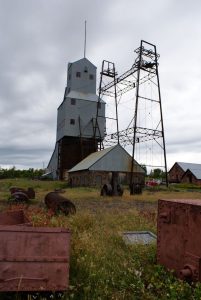
Photo courtesy Pierre Couture
UP Iron Deposits
A government surveyor, William Austin Burt is said to have discovered iron in 1844 near what is now the town of Negaunee in the Marquette Iron Range. A year later, with the help of Native Americans, the Jackson Iron Company was developed as an open pit mine.
In 1847, the Carp River Forge was built near the town of Negaunee to process the iron. Today you can visit the Michigan Iron Industry Museum located near the forge. It is open Wednesday through Saturday, 10 a.m. to 4 p.m. Admission is free with a Michigan State Park Recreation Passport; however, some special programs and events may require a fee or donation.
Jasper Knob, in Ishpeming, MI, is an exposed outcrop of jasper and hematite. The jasper is dark red because of its iron content layered with alternate bands of silver-grey hematite-banded iron. The site is part of the Cleveland Cliffs Iron Company and is open to the public, but climb the knob at your own risk as the footing is tricky.
A. E. Seaman Museum
Located in Houghton, on the campus of Michigan Technological University (MTU), the A. E. Seaman Mineral Museum, founded in 1902, features world-class mineral specimens from the Great Lakes region and around the world. A 19-ton native copper mass recovered from Lake Superior, is on exhibit in the museum’s Copper Pavilion. A visit here may be a great introduction to help plan your visit to the UP.
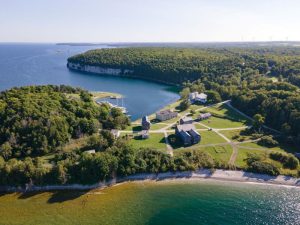
Photo courtesy Visit Escanaba
Fayette Historical State Park
From 1867 to 1891, Fayette was a bustling townsite. Raw iron was shipped from the Negaunee mines by rail to Escanaba, put on barges and dragged by steam-powered tug boats to Fayette to be smelted. An estimated 229,288 tons of pig iron was produced in Fayette during this time.
After iron production ceased, the town site, located in the UP’s Garden peninsula, became a fishing village, resort and finally, in 1959, a state park, ghost town and living museum. Today, over 20 of the original buildings have been restored, including the stunning blast furnace complex. You can tour the charcoal kilns, machine shop, hotel, doctor’s office, mine manager’s home and even the butcher shop. New restoration is always underway to enhance every visit to this outdoor museum.
Fayette State Park has an interpretive center as well as camping facilities, beach, boat launch and boat slips. You might even want to hike the trail to the limestone cliffs for a breathtaking view of the townsite. To visit, a Michigan State Park Permit is required, but no additional fees are required unless camping or boating.
8 Unique UP Michigan Minerals
Most rockhounds already know to search Lake Superior’s beaches and river beds for beautiful agates or to take an early evening stroll on the beach with a black light to look for glowing sodalites, but the copper and iron deposits are often found with some beautiful and more unusual Michigan minerals that are worth some attention. Let’s take a look at some Michigan Minerals here.
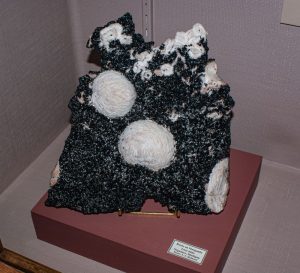
- Barite: This barium sulfate mineral often occurs in iron- and manganese-bearing jaspers and occasionally as crystals in basalt rocks.
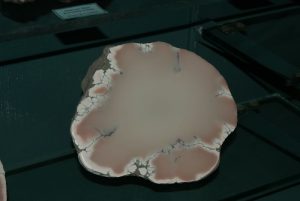
Datolite - Datolite: This hydrous calcium borosilicate is found with copper in basalt flows in the Lake Superior region. It varies in color from brown, yellow, light green, pink and even colorless.
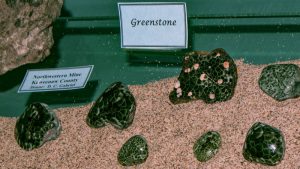
Greenstone - Greenstone: Chlorastrolite is a metamorphic (pumpellyite) rock ranging from light to dark green often found in association with copper. It was originally discovered on Isle Royale, a Lake Superior island, now a National Park. It has been designated as Michigan’s State Gemstone.
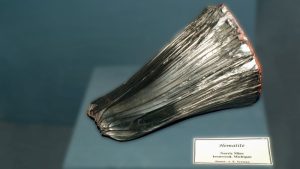
Hematite - Hematite: Iron oxide is commonly found in igneous rocks, especially lavas rich in iron carbonate and silicate. It occurs in various forms including nodules and crystals.

Mohawkite - Mohawkite: This is a rare mineral consisting of arsenic, silver, nickel, skutterudite and copper found only in the mines of the Keweenaw peninsula.
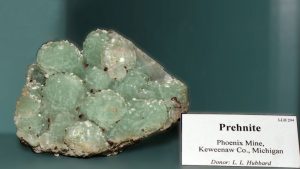
Prehnite - Prehnite: A hydrous calcium aluminum silicate often found in the cavities of basalt volcanic rocks as light green crystals in the copper deposits of the Lake Superior region.
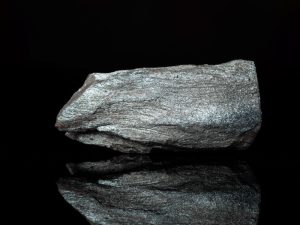
Specular Hematite (Specularite) - Specular Hematite (Specularite): A black variety of hematite with fine silver-looking crystals and a metallic luster usually formed by metamorphism. It may contain varying amounts of magnetite.
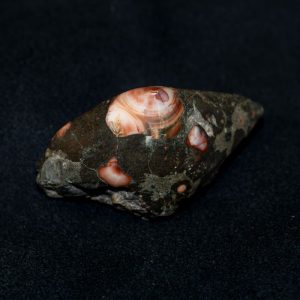
Thomsonite - Thomsonite: Large nodules of this (zeolite group) hydrated sodium calcium aluminum silicate are found along the shores of Lake Superior, but are difficult to remove from their basalt host.
Where to Take a Michigan Minerals Mine Tour
Always check websites before a visit for fees and special requirements or restrictions. Here are a few favorites:
Quincy Copper Mine and Townsite
(Hancock, MI) Several tours are available above and below ground. Allow two to three hours or more. Tourists with mobility issues should call ahead to make arrangements. Some of this area has been designated a National Historical Park, run as a collaboration between the National Park Service as well as private and public entities.
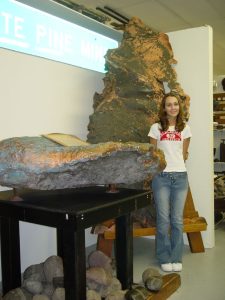
Photo courtesey Dean Juntunen
Iron Mountain Mine
(Vulcan, MI) Ride a tram to visit this iron mine below the surface and maybe try a pasty (PAST-ee) — the original miners’ meal. (A.K.A. the “Big John” Mine)
Adventure Copper Mine
(Near Greenland, MI) The mine offers tours, workshops and educational programs for all levels. Tours run from one to six hours, some with age and ability requirements. A pasty lunch is served underground on the six-hour tour.
Cliffs Shaft Iron Mine & Museum
(Ishpeming, MI) Join a retired miner or mine historian for a walking tour of the service tunnels. This volunteer-run museum includes displays of original mine equipment, a working forge, blacksmith and a Michigan minerals display.
Isle Royale National Park
A seasonal National Park, an island, located in Lake Superior and accessible only by boat or seaplane, Isle Royale offers interpretive signs highlighting the remains of early 1800s copper mining on the island. An entrance fee applies. Prior planning and reservations are highly recommended.
Delaware Mine
(12 miles south of Copper Harbor, MI) This mine offers above and underground, self-guided tours. Underground, you can see a vein of pure copper exposed in the walls of the mine.
Keweenaw Week
Each August, the A. E. Seaman Museum, Quincy Mine Hoist Association and the Copper Country Rock & Mineral Club (CCRMC) work together to sponsor several Michigan mineral-related events. Some events require prior, limited registration and fees apply.
For additional information, updates and special event registration: www.ccrmc.info or www.museum.mtu.edu/visit/events. Whether you visit Michigan’s UP for a long weekend, a week, or longer, you won’t run out of fun things to do. Be sure to try a pasty while you’re there–meat pies–the original finger food of the UP miners. And, don’t forget to pack your metal detector and hiking boots to look for those Michigan minerals.
This story about Michigan minerals previously appeared in Rock & Gem magazine. Click here to subscribe. Story by Sue Eyre.


